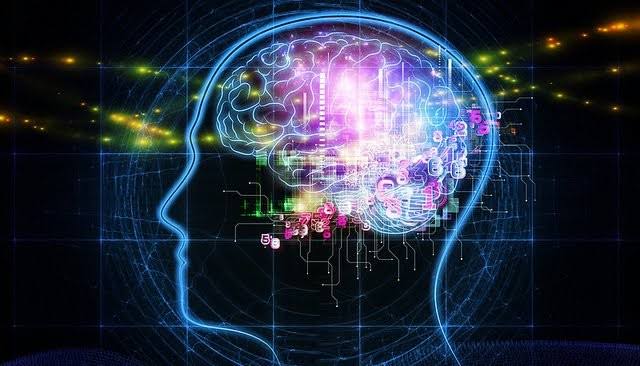Explore the intersection of AI art and neuroscience, delving into creativity and perception. Discover how neuroscience informs our understanding of artistic expression, the role of AI in reshaping creativity, and the implications for art appreciation in a technologically advanced world.
The convergence of intelligence (AI) and neuroscience is an area of study that delves into the realms of creativity and perception. The rise of AI created art prompts inquiries into what defines creativity, the mechanisms behind artistic expression and the ways in which both human and machine intelligences perceive and interpret artistic creations. This article explores these topics by examining how neuroscience shapes our understanding of creativity and how AI challenges established concepts of artistry.
The Neuroscience of Creativity
Creativity is seen, as a quality associated with human nature tied to emotions, life experiences and thought processes. Insights from neuroscience shed light on how the brain fosters creativity showing that it involves collaboration, among regions of the brain. The mode network (DMN) which is active during moments of daydreaming and self reflection plays a role in generating ideas. Moreover the control network (ECN) comes into play by assessing and refining these ideas to ensure that the creative outcomes are coherent and relevant. Studies indicate that individuals tend to exhibit connectivity both within these networks enabling them to think outside the box and connect seemingly unrelated concepts. This brain flexibility is crucial, for artistic creativity where the fusion of imagination with skills results in the production of unique artworks. Additionally emotional involvement in the creative process can enhance the quality of output as the brains system interacts with areas to create emotionally impactful art.
AI and the Mechanisms of Art Creation
The rise of generated art challenges notions of creativity by introducing algorithms and machine learning as creators. Programs like DeepArt and DALL E use networks trained on extensive datasets of existing artwork to produce images. These systems examine patterns, styles and color schemes to craft pieces that resemble the work of artists. The technology behind this relies on a form of creativity defined not by personal experiences or emotions but by processes and pattern recognition.
The emergence of AI as a force in the realm of art brings up questions about authorship and what constitutes art. If a machine can create visually stunning and conceptually intricate pieces what does that mean for human artists? Some argue that while AI can make art it lacks the depth and subjective experiences that define human creativity. Others believe that the collaboration between humans and machines can result in artistic expressions, blending intuition with computational skill.
Creativity Beyond Traditional Boundaries
Art created by AI pushes the boundaries, of what we consider creativity. Through algorithms that explore approaches and styles AI can create pieces that challenge how viewers perceive and what they expect. This aligns with the idea of thinking the ability to come up with solutions to a problem. AI can offer visual interpretations that might not occur to human artists enriching the realm of creativity.
Additionally the integration of AI in the world of art encourages collaboration, between artists and technologists. Artists can utilize AI tools to enhance their creative processes by experimenting with techniques and forms that may be challenging to achieve through traditional methods. This collaboration allows artists to focus on aspects while letting AI handle tasks that are complex fostering an environment where creativity can thrive without constraints.
The Role of Perception in Art Appreciation
The way we perceive art significantly impacts how we engage with and interpret it. Research in neuroscience shows that our brains react to visual stimuli based on our backgrounds, social influences and personal experiences. Elements like color, shape and layout trigger neural pathways that shape how we feel and think about art. The interaction between the observer and the artwork is crucial in meaning making since each viewer brings their own perspectives and interpretations.
AI generated art introduces questions, about perception. When people see a piece made by an algorithm they might have a different emotional response compared to one created by an artist. Knowing that a machine created the artwork can affect how it's appreciated and understood sparking conversations about authenticity and emotional connection. This poses challenges for curators and art institutions as they navigate the implications of showcasing AI generated art alongside traditional forms.
The Future of Art and AI Collaboration
The evolving dynamic between AI and human creativity is poised to bring about challenges and opportunities, for both artists and audiences. With technological progress AI is set to advance in its ability to comprehend and mimic styles offering a range of creative possibilities. Artists may find themselves taking on roles as curators of AI generated content shaping the machines creative processes to align with their vision. Moreover collaborations involving artists, neuroscientists and AI researchers could enhance our understanding of creativity. By examining how both human brains and AI systems create and interpret art researchers can gain insights into creativity that could impact areas like education, therapy and design.
In summary the convergence of AI art and neuroscience presents a realm, for delving into the realms of creativity and perception. While AI created artwork questions notions of artistry it also paves the way, for collaboration and innovation. As we navigate this changing landscape the interplay between human creativity and machine intelligence will mold the future of art prompting us to reevaluate what it means to create and value art in a technology driven world. The knowledge gained from neuroscience not enrich our comprehension of the process but also offers a framework, for recognizing the distinct contributions that both human and AI artists make to the cultural discourse.
